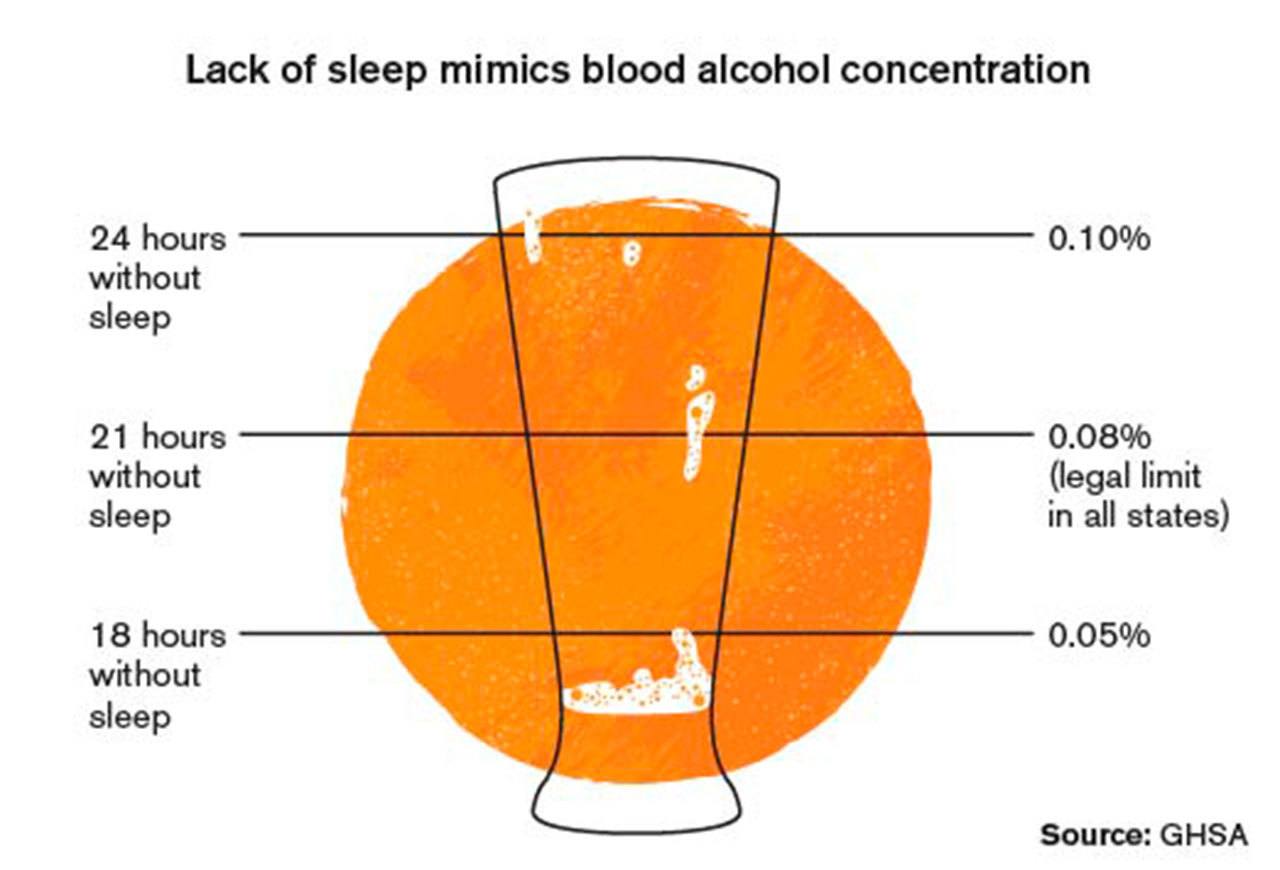New drivers taking a joy ride with their teenage friends.
Slipping in a text message, or capturing a rare Pokémon.
Drinking too much alcohol, ingesting too much marijuana, taking a heavy dose of prescription drugs.
There are many ways we distract ourselves and otherwise impair our ability to drive — with laws that aim to protect us from ourselves as a result.
But what about forms of impaired driving that aren’t spelled out in the rule books?
In this Back to Driving School lesson, we look at some of those dangers and why they’re worth treating with as much automatic caution as putting on your seat belt.
The ‘fourth D’
The National Highway Traffic Safety Administration has expanded its definition of impaired driving to include not only drunk, drugged and distracted, but also drowsy driving.
This isn’t just about falling asleep at the wheel.
Driver alertness, attention, reaction time, judgment and decision-making are effected by lack of sleep. Drowsy drivers are twice as likely to make performance errors as drivers who aren’t fatigued, according to the National Highway Traffic Safety Administration.
“Drowsy driving is an issue we see frequently on the roads,” Washington State Patrol trooper Mark Francis said. “A drowsy driver can mimic the same poor driving of an impaired driver. Often times, collisions involving drowsy drivers are significant as there isn’t much braking involved prior to impact.”
Think of too little sleep as analogous to too much alcohol.
A driver who has been up for a continuous 18 hours will typically exhibit performance levels similar to a person with a blood-alcohol level of 0.05 percent, as detailed in a new report from the Governors Highway Safety Association. Hit the 21-hour mark, and you’re like a person who is officially drunk at the wheel at 0.08 percent.
Drowsy drivers are involved in an estimated 1 in 5 fatal crashes, according to the AAA Foundation for Traffic Safety. Many of those who report falling asleep at the wheel do so quickly, within the first hour of driving.
Sleep-related crashes are most common in young people, especially men, adults with children and shift workers, according to the National Sleep Foundation.
Various studies show drowsy driving often happens when drivers are alone. So what do you do when there’s no one in the passenger seat to give you relief?
Don’t rush the problem by continuing on.
“Pull off the road safely and take a quick nap if you find yourself dozing off at the wheel,” Francis said.
Or, as the governors’ study puts it: “Crash in Bed, Not on the Road.”
Ban the Big Mac?
By now we know we shouldn’t handle our phones while driving (even if we still do).
The majority of states ban texting and driving. Fourteen states go further with hands-free laws. No state bans all cellphone use for all drivers. (Though Washington is among those to ban all cellphone use by novice drivers.)
Yet even hands-free is not distraction-free. Drivers talking on cellphones are half a second slower to hit the brakes in emergencies and miss more than half the visual cues seen by attentive drivers.
And why stop there?
Should eating a hamburger with one hand while managing the steering wheel with the other also be outlawed? Keeping a pet on a lap? Sipping a latté?!
“The distraction isn’t just having something in your hand and/or taking your eyes off the road,” Francis said. “It is also the dividing of your attention while you are doing these tasks.”
Maine and Utah are the only two states that have distracted driving laws that aim to go beyond the cellphone by curbing any activity that’s not related to driving. Some New Jersey lawmakers are seeking to do the same.
In a NJ.com story, though, an Insurance Institute for Highway Safety spokesman said such laws may not do much good.
With enforcement and education, seat belt laws effected widespread change in driving habits and fewer deaths. But laws that ban cellphone use have yet to show significant improvements in crash rates, the spokesman told the website.
In our state, hands-free laws and the texting ban went into effect in 2008. Yet in a AAA survey, 59 percent of Washington drivers reported talking on a cellphone while driving some time in the last 30 days, with two in 10 saying they did it regularly.
Last year, the Washington State Patrol pulled over more than 18,000 people talking on cellphones and another 4,126 people texting — considered a small fraction of the overall use.
If that’s true for cellphones, it probably would hold true for a breakfast burrito.
Common sense rules
There can’t be a specific law for every distraction.
Trooper Francis noted, however, that state laws and their often hefty consequences still apply.
“If you cause a collision due to being negligent in your vehicle — whether it is having your lap dog run around on your lap, eating cereal, putting on make-up, etc. — you could be cited for negligent driving 2nd degree which is $550,” Francis said.
The same holds true for drowsy driving. There’s no sleepalyzer to measure if you’re too tired to get behind the wheel. But cause a crash while fatigued and you can pay consequences on par with someone who blows a DUI.
“If you fall asleep and kill or seriously injure someone, you are potentially looking at a felony due to disregard for the safety of others. If you fall asleep and cause a fender bender, you are looking at another negligent driving 2nd degree,” Francis said.
Don’t need to swipe a sad-face emoji to understand that lesson.
Read about other topics in the Back to Driving School series at the Street Smarts blog, www.heraldnet.com/tag/street-smarts.
Talk to us
> Give us your news tips.
> Send us a letter to the editor.
> More Herald contact information.

























